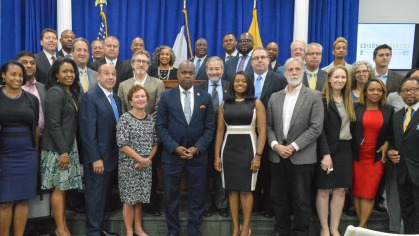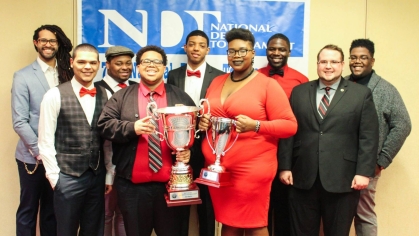Rutgers University Community In Newark Mourns Loss Of Its First Provost, Dr. James E. Young, At 86
(Newark, N.J.) – A man who helped shape Rutgers University, Newark, from a collection of schools and colleges into a major research university is being mourned today by former colleagues. Dr. James E. Young, 86, of Somerset, N.J., who died June 18, had served Rutgers for more than 20 years, on all three campuses: Newark, New Brunswick and Camden.
“Jim was a wonderful teacher, mentor, business associate, and above all, my friend and confidante. I miss him deeply,” stated Gene Vincenti, executive vice chancellor for administration. Vincenti recalled that he was only 26 when Young hired him as his assistant provost.
Dr. Young had joined Rutgers in 1970 as dean of the Camden College of Arts and Sciences, and became chief administrator in 1972. The following year, he came to Rutgers University, Newark, as its first provost. In that role, Dr. Young oversaw the development of the campus from a collection of small independent colleges and professional schools into a major urban research university. Under his leadership, Rutgers in Newark developed the diversity that would, beginning in the mid-1990s, establish it as most diverse national university campus in the United States.
Dr. Young also was instrumental in the establishment of the Council for Higher Education in Newark (CHEN) and in the development of joint programs among the four public higher education institutions in Newark: Rutgers, the University of Medicine and Dentistry of New Jersey, the New Jersey Institute of Technology and Essex County College. Dr. Young resigned as provost in 1982 to return to his first love, teaching, this time at the College of Engineering in New Brunswick. Upon his retirement in July 1993 he was named a distinguished professor emeritus of engineering.
Before coming to Rutgers, Dr. Young was a professor of engineering at Alfred University from 1962 to 1967, where he chaired the Ceramic Engineering Department and produced major research in the structural and architectural uses of heavy clay products.
He earned his B.S. at the University of Illinois College of Engineering in 1948 and his Ph.D. at the New York State College of Ceramics at Alfred University in 1961.
A memorial service is planned for September 2009.


